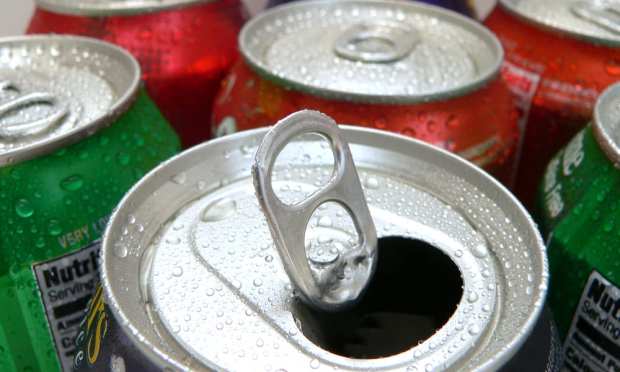Hard Times For Soft Drinks As Coca-Cola Puts The Lid On Tab

Tab, shift, delete. It’s our cryptic way of conveying the hurtful news that Tab, one of America’s proto-diet colas and the “drink of beautiful people” since 1963 will shuffle off its carbonated coil as Coca-Cola goes on a diet, trimming its roster of beverage brands due to the COVID-19 shift.
Tab is not alone in Coke’s beverage boneyard. The Wall Street Journal recently reported that the giant will “slash its 500 brands by more than half, accelerating an ongoing culling effort in response to the coronavirus pandemic,” adding that “already this year, the company has closed its Odwalla juice and smoothie business and has begun winding down its Zico coconut water.”
You can also take your last swigs of Diet Coke Feisty Cherry, Sprite Lymonade and Coke Life, according to WSJ reporting, as well as “small regional brands such as Northern Neck Ginger Ale, Delaware Punch and Mendota Springs seltzer.” They’re all getting the tap shut off, too.
What are “Tabbies” going to wash down their burgers with now? Water?
Mercifully, it’s not nearly as dire as that. But whether you call it “soda” or “pop,” you’re going to notice big changes in selection upcoming. Perhaps even a vaccine flavor?
Sugary Liquids Seeking Their Own Level
Ironically, Tab is an early example of customer-centricity, a concept that’s been reformulated in recent years as customer experience, and around which all good business relationships revolve today. Although Tab languished at about 1 percent of sales for years, the beverage behemoth kept it in production to please a small but incredibly thirsty fanbase of so-called “Tabaholics.”
But another made-up word — “pandenomics,” which PYMNTS devised to describe unique COVID-era market dynamics — doesn’t allow for such sentimentality, at least not for low single-digit sellers. Good thing there’s caffeine in Diet Coke, because drink makers must stay alert.
“Big Beverage” has learned that soft drinks are not, in fact, as impervious to volatility as they perhaps believed. That’s what you get for “drinking the Kool-Aid” (a Kraft Heinz beverage brand that’s doing just fine, incidentally, with its latest marketing blitz hitting just as COVID did).
For Coke and Pepsi, however, the glass looked half-empty in the first half of the year.
“Coca-Cola CEO James Quincey set the tone even before his company reported big second-quarter problems on July 21. Coke saw earnings drop 33 percent, as revenues saw their largest decline in 25 years,” PYMNTS reported. Meanwhile, PepsiCo Chairman and CEO Ramon Laguarta “also reported weak second-quarter earnings [in July], with soft beverage sales only partly offset by strong food sales.”
Laguarta added at the time that company officials “are not providing a financial outlook for the fiscal year 2020 at this time. However, we continue to believe we have ample liquidity and flexibility to meet the needs of our business and return cash to shareholders.”
Ample liquidity, huh? Tell it to the “Tabaholics” (different company, same point).
Bubble, Bubble on the Double
Not to give the impression that the fizz has … fizzled … in the soft drink markets.
Despite depressing summertime outlooks, PepsiCo roared back in early October, saying on Oct. 1 that its “eCommerce sales almost doubled during the third quarter, and that the company plans to invest in the channel in a big way to strengthen online and direct-to-consumer sales.”
eCommerce is a saving grace for soft drinks, as it has been for virtually every other class of merchandise during and after pandemic lockdowns. PYMNTS’ ongoing coronavirus report series has found a consistent trend away from in-store and toward online shopping. The effect has been especially pronounced in the grocery sector, and PYMNTS data suggests that large numbers of consumers have permanently shifted to buying food and beverages online.
And what of the restaurant angle on drinks? Thanks to the touchless, QR code-scanning, app-controlled Coca-Cola Freestyle machines arriving in McDonald’s, Wendy’s and other fast-food chains, when we do start going back inside to dine, there will be fewer things to touch.
That’s what we call progress. Still, we tip a 40-oz. cola to the memory of Tab.
